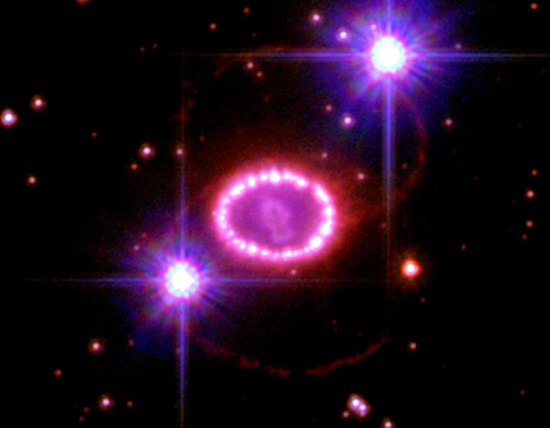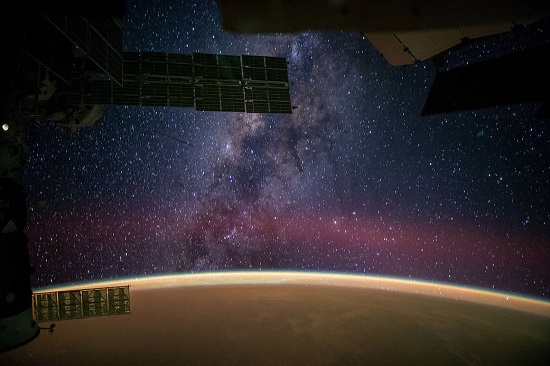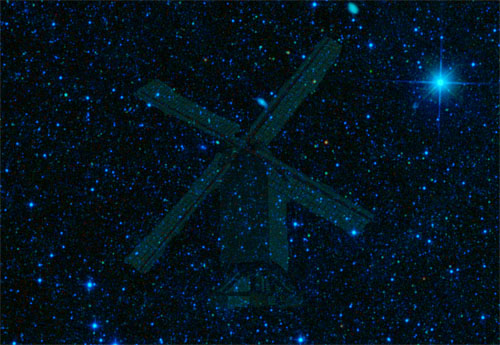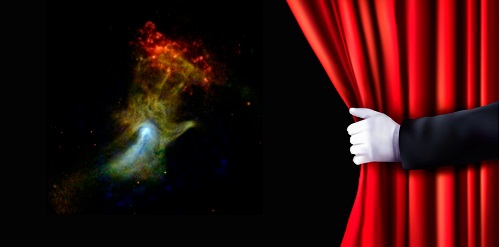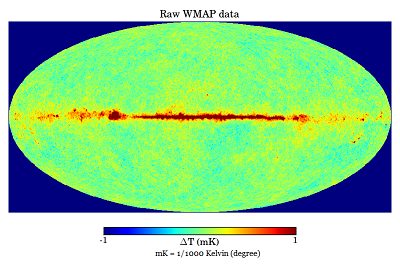As noted in part 1 of this article, distant starlight has been called the best argument against biblical creation and a young earth. A serious charge. So I thought it would be helpful to identify the best answer to this “best” charge against creation. A number of solutions to this problem have been offered by scientists who happen to also be creationists. We briefly examined the popular ones in the previous article. Now that we’ve completed an overview of possible solutions, we’ll get to the meat of the matter: identifying which theory or theories both have a possibility of working, and surviving the principle of Occam’s razor. So without further ado: Continue Reading
Tag Archives: Russell Humphreys
Distant Starlight – Under Occam’s Razor – Part 1: Contenders
Distant starlight: It’s been called the best argument against biblical creation and a young universe.[1] Why is that? Because Big Bang Theorists, secularists and anyone who believes in an ancient universe believe they have an iron clad case against a young universe with regard to distant starlight. The argument goes like this.
The Problem
We can see stars hundreds of thousands, millions even billions of light years away. Take the Andromeda galaxy – 2.5 million light years away. A supernova was observed in that galaxy. That implies the light took 2.5 million years to get to earth. But if the earth (and indeed the entire universe) is only 6,000 years old. How can we see Andromeda or the supernova? Using standard understandings and formulas, there hasn’t been enough time for the light to get here from Andromeda. Yet we can see it. On the face of it that suggests that the earth is at least 2.5 million years old – much older than the 6,000 years that Biblical creationists claim for the universe. And the problem only gets worse for more distant stars. This is indeed an acknowledged problem. Continue Reading
What might Einstein think about flat earth theories?
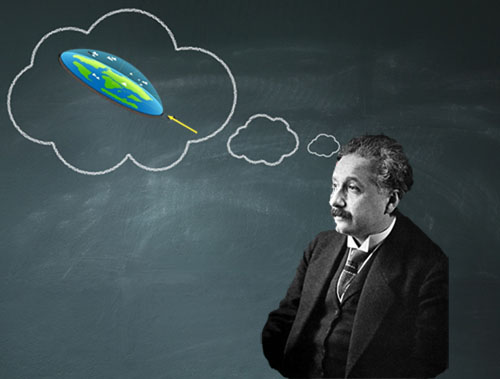
There are plenty of resources available to debunk the proposition that the earth is flat. Some of the ones I think are most helpful are listed in the resources section below. So “Why even bother addressing this theory?” you might might wonder. I pondered that question myself for a time, and decided I should address it for the following reasons:
1. Creationists are often accused of believing “crazy” things. Some make the charge that we are no different from believers in a flat earth, and some accuse us of believing in a flat earth. In response, what better way to show creationists in general, (and this writer in particular) doesn’t believe in a flat earth than by debunking it? Doing so also gives the added benefit of distancing creationists from flat earth believers.
2. While many have approached this by providing various evidences of why the earth must be shaped like a globe, and not flat like a pancake as flat earth believers claim, I have not seen any debunkers that approach it this way – namely by looking at the physics of such a system as Albert Einstein might. So for these reasons I throw my hat into the flat earth debunking ring. Since I am approaching this from the stand point of an investigation of the physics as Albert Einstein might investigate it, let me describe the approach he would probably take, and the primary theory we must understand.
Cosmologists Today: Tilting at Windmills
I am I, Don Quixote!
The Lord of La Mancha, my destiny calls and I go.
And the wild winds of fortune shall carry me onward oh withersoever
they blow. Withersoever they blow.
Onward to glory I go!
So sings the title character of the hit movie and play Man of La Mancha based on the book Don Quixote by Miguel de Cervantes. Don Quixote is the name adopted by Alonso Quixano a likeable, less-than-affluent, well read fellow, well past his prime who lives with his niece in the Spanish village of La Mancha. He reaches a point where all his days “from dawn to dark ” are spent reading his favored books: those of the tales of chivalry and the deeds of errant knights from days long ago. However being past his prime, and “with little sleep and much reading his brains got so dry that he lost his wits.”[1]. He was so immersed in the tales that with his waning faculties, he lost the ability to distinguish between what was fact and what was fiction. To the point where he believed that “the whole fabric of invention and fancy he read of was true…”[2]
And thus Quixano decides to adopt the distinguished name of Don Quixote de La Mancha, become an errant knight and go off in search of adventures to right wrongs and fight injustice. Perhaps the most memorable of which is when he comes upon some windmills which he imagines to be giants, and begins jousting with them from his aging and arthritic horse. It’s from this scene we get the phrase “tilting [or jousting] at windmills” which originally meant to fight against imaginary or unimportant enemies or issues. But as a Yahoo aficionado points out, figuratively it has come to mean “a futile activity.”[3]
Which brings us to the current state of affairs in cosmology. Many cosmologists these days are like Don Quixote – jousting at imagined problems that are a result of their imagined theories in order to obtain great glory. Continue Reading
Pulling Back the Veil – What Cosmologists are Hiding
(Or: Big Bang Magic Part 3:
Pulling Back the Veil on the five biggest questions about the universe)
Contrary to what you may have been led to believe, cosmology these days is not an objective science, devoted strictly to the scientific explanation of the origin of the universe. There is an agenda that rules cosmology. An agenda that has nothing to do with science as confessed by Richard Lewontin: Continue Reading
More Big Bang Magic Tricks – Shadows and Waves

What casts no shadows besides vampires? Apparently, the big bang.
In theory, scientists are objective seekers of the truth, handling the data that is discovered with honesty and integrity. Unfortunately particularly in sciences that have worldview implications, that is not the case. One of those sciences is cosmology – the science that attempts to determine the origin and development of the universe. With the possible exception of Darwinian evolution, there are no sciences that have larger worldview implications that cosmology. Even without knowing how the origin of the universe came about, the psalmist is correct in his declaration “the heavens declare the glory of God.” (Ps 19.1) Atheist cosmologists know that and have tried to mute that testimony by attempting to come up with a story of the creation of the universe that doesn’t involve God. Because even if you haven’t formally studied apologetics or cosmology, everyone implicitly understands the Kalam Cosmological argument for the existence of God: Everything that begins to exist has a creator. The universe began to exist, therefore the universe has a creator. The only one powerful enough to create the universe is of course God, therefore God created the universe.
Such a simple, intuitive, easy to understand proof of the existence of God is anathema to atheist cosmologists because their own preferred theory of origins – the Big Bang theory – though incorrect nevertheless points to the fact that the universe had a beginning. Continue Reading
Earth’s magnetic field: Testament to more than a young earth
|
Earth’s magnetic field exhibits signs of being young and part of a grand design.
|
Saturn has its beautiful rings. Diamonds are often photographed adorning the fingers or the necks of beautiful women. Both Saturn and diamonds are testimonies to a young earth (which I wrote about here and here). The earth’s magnetic field is also a testament to a young earth – but it’s more than that; it’s a powerful testimony that God created it. But being invisible to the naked eye, earth’s magnetic field is at a distinct disadvantage in this visual age – requiring visual aids like the depiction of the field above. But make no mistake, the magnetic field around the earth is one of the most powerful testaments to a carefully and lovingly designed young earth that you’re likely to find. And what it lacks in glamour, it makes up for in the power of its evidentiary support of Genesis 1.1: In the beginning God created the heavens and the earth. Here’s why:
Evidences Gleaned from Earth’s Magnetic Field
1. Young earth
Old earth proponents will tell you that the earth is about 4 1/2 billion old. That means the magnetic field should also be about 4 1/2 billion years old. If that were true you would expect to have a magnetic field that’s very stable, not changing much over time – since we’re talking about a lot of time: not merely hundreds of years, or thousands or even millions of years, but billions with a “b”. The problem with that supposition is that it doesn’t match the observed measurements. It has been known for some time that the earth’s magnetic field is decaying. As geologist and creationist John D. Morris put it:
“The strength of the magnetic field has been reliably and continually measured since 1835. From these measurements, we can see that the field’s strength has declined by about seven percent since then, giving a half-life of about 1,400 years.”1
Obviously that’s a problem. A field decaying that quickly will last only a few thousand years not a few billion. And it’s gotten worse for old age earth believers: scientists have recently discovered that the field has begun to decay even faster:
“Previously, researchers estimated the field was weakening about 5 percent per century, but the new data revealed the field is actually weakening at 5 percent per decade, or 10 times faster than thought.”2
This does not bode well for the old earth explanation of a magnetic field that is billions of years old. Their explanation up to this point has been the field is created and maintained by a “dynamo”, a natural generator. Magnetic fields are created by the movement of electrons – a current flow. Scientist posit that the rotation of the earth and convection (movement due to heat) is sufficient to produce a current from the molten iron/nickel of the earth’s outer core, which they believe would create a self-sustaining field generating dynamo. The problem with the theory is that “Scientists have not produced a workable analytic model, despite 40-50 years of research, and there are many problems.”3
Creation Theory is Better Science
Contrary to claims that Creation Science is not really science because it makes no predictions and has no objective data that can be tested, creationist scientist Continue Reading
Which theory has the fatal flaw – Big Bang or Creation?
Nobody likes double standards. There have been long, sometimes bloody, and in some cases – ongoing – battles to make the same rules apply to everyone. This is true in the work place – most want equal pay for equal work. This is true in race relations – no one in this day and age will abide Jim Crow laws or making African Americans sit at the back of the bus. It’s true in sports – no one like cheaters – however they choose to break the rules thus applying a double standard. Why then does it not apply to the sciences of cosmology and evolution? Since the focus of this article is on distant starlight, I will focus in on the double standards used in cosmology, but understand the same points apply equally to evolutionary “scientists” who give explanations which are no more than smoke and mirrors.1
Naturalistic Cosmologists regularly breaks the laws of physics
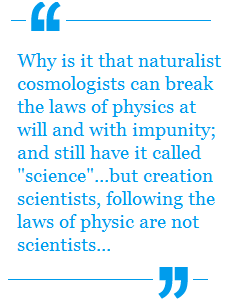 |
Why is it that naturalist cosmologists can break the laws of physics at will and with impunity; and still have it be called “science” (not pseudo-science), but creationist scientists, following the laws of physics are not scientists, and are told they’re not practicing science? No such thing happens you say? Let’s dismiss the notion that creation scientists are treated fairly, and with respect. If they were, there would be no need for the recent article by Creation Ministries titled: Fallacy: creationists can’t be scientists;2 or Ben Stein’s recent movie on the censure faced by scientists who don’t toe the evolutionary line and instead support intelligent design.3 |
The fact that creation scientists are not given the respect they deserve is already well documented. What is not as well documented is the ability for materialist scientists to play fast and loose with the laws of physics and still be considered “scientists” contributing “valid” theories. Consider the following conversation:
Big Bang Theorist: The universe began 13.7 billion years ago when a singularity which consisted of all the energy that will ever exist, which did not exist previously, suddenly exploded into existence out of nowhere (and nowhen4) creating time and space in an event commonly known as the big bang. The universe has been rapidly expanding ever since.
Creationist: No, the universe began about 6,000 years by an act of God as recorded in Genesis 1.1 “In the beginning, God created the heavens and the earth.”
Big Bang Theorist: If the universe is only 6,000 years old, how do you explain distant stars whose light has taken million of years to reach earth?
Creationist: There are a number of theories that explain that. How do you explain the big bang’s Horizon problem?
Big Bang Theorist: That’s easy: Inflation.
Creationist: Inflation is not the answer – many scientists don’t believe it, and simply put: the whole theory is impossible. As for distant starlight, there are theories on how to resolve that apparent problem.
For those defending a young earth, creationist world view, this conversation is likely a familiar one. But before I point to some of the answers regarding how distant star light can be seen in a young creation, let’s first look at the many problems for big bang cosmology. Let me start with an overview of the big big as provided by Morgan Freeman from his series, Through the Wormhole
“With the addition of inflation, the big bang became a cohesive three act play.
Act one – a singularity pops into existence out of nowhere and nowhen and containing in one single dot all the energy that will ever be in our universe.
Act two – Inflation suddenly takes hold. An unimaginably rapid expansion of space smooths the spreading out of that energy bringing order to the universe. It’s now a massive soup of evenly expanding plasma.
Act three – the universe cools. Matter begins to clump together under the force of gravity.
Eventually forming stars, galaxies and planets.5
Inflation has been mentioned a couple of times now. If you think it has something to do with your money, the economy or the amount of air in your car’s tire, you clearly need this overview.
The Big Bang theory: Playing fast and loose with the laws of physics
You don’t have to get deep into the big bang theory before scientists have to start playing fast and loose with the recognized laws of physics.
Problem 1: The Singularity
The first one – in act one – is a familiar one. “A singularity pops into existence out of nowhere and nowhen.” Stop. This is impossible. Nothing exists. From nothing comes nothing. How can a “singularity” which consists of “all the energy that will ever exist” be created? It defies the law of conservation of energy which states in a closed system, energy can be neither created nor destroyed.
Problem 2: “Popping into Existence”
Just as importantly how can it “pop into existence” when nothing exists? What is there to pop into? Neither space nor time exists at this point. As our narrator Morgan Freeman points out, there is no “where” for it to pop into, and there is no “when” to pop into since time does not yet exist. Thus there is no “existence” for it to pop into. This breaks the law of causality which states in the cause-effect chain of events – effects follow causes (not the other way around) and those causes are separate from the effects. This is essentially the argument made by the Kalam Cosmological argument for the existence of God. Yet big bang cosmologists essentially want you to believe that the singularity is self caused – because again there is nothing in existence, according to the big bang theorists, so nothing could have caused it but itself.
So here were are in the “first act” of the big bang, we haven’t even gotten to the difficult problems, and already 2 fundamental laws of physics have been broken.
Paul Steinhardt, the Albert Einstein professor of physics at Princeton University explains how physicists allow themselves to get away with this nonsense:
“This is normally referred to as the cosmic singularity, some sort of breakdown in the laws of physics, which in the standard big bang theory you simply ignore.”6
They simply ignore it. Pretend it isn’t a problem or it doesn’t matter. And they call that science, and themselves scientists?
Problem 3: The Horizon problem
The Horizon problem is yet another show stopping issue for the big bang. Big bang theorists will tell you it has been “resolved” by sleight of hand tricks involving the laws of physics with the aforementioned theory of inflation. But before delving into the problems with inflation, you need to understand the problem7 that inflation “solves” for the big bang. Continue Reading

